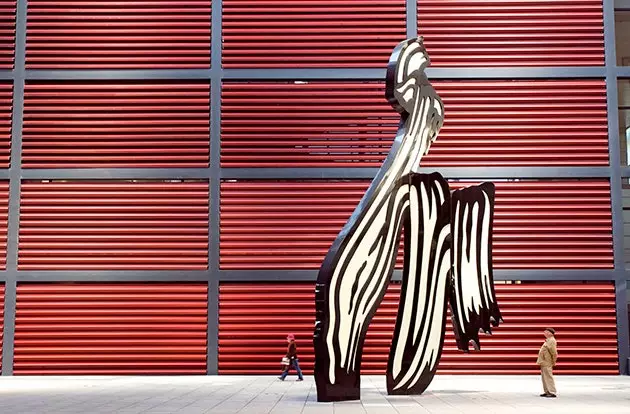
Reina Sofía Museum: all art
1. YOUR FULL NAME
Although it is commonly known as 'the Queen' in a clear grammatical defiance of gender, this place is officially called Reina Sofía National Art Center Museum , which in acronym would have remained as MNCARS , something completely unpronounceable. However, everything has its reason:
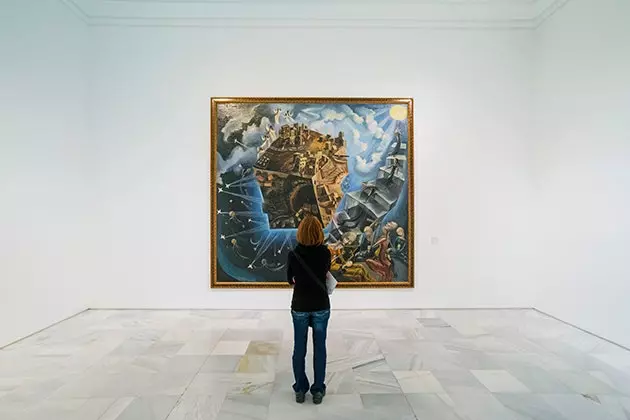
Let yourself be captivated by the works of art that the museum treasures
two. IT GOT OUT OF THEIR HANDS
The fact is that the project got out of hand. It all begins in 1952 when a group of artists and intellectuals led by Jose Luis Fernandez del Amo they managed to get the State to start taking seriously the art that was being made and to create the Spanish Museum of Contemporary Art. Over the decades it grew until in the 1980s it was decided to create a space for exhibitions in the old Madrid General Hospital called the Reina Sofía Art Center. Just two years after it was inaugurated (1986), everything turned upside down and it was agreed that this place should not only serve for exhibitions, but to be the great Spanish museum of art of the 20th century. And so, accumulating names, it ended up being a Museum, being of the State (National), maintaining the roll that gave the 'Art Center' and giving the monarchy and its great cultureta a tad: the Queen . End of story.
3. HE WAS LIBRARIAN AND UNIVERSITY
But before reaching Atocha and finishing off that Avenue of Art that is the Paseo del Prado, the project lived in other places. First, the ground floor of the National Library , surviving in ostracism as second course of the building. When their collection and airs grew, they went to the University City, using the facilities of the current Costume Museum. Then he grew up and went back to the city. Being your home...
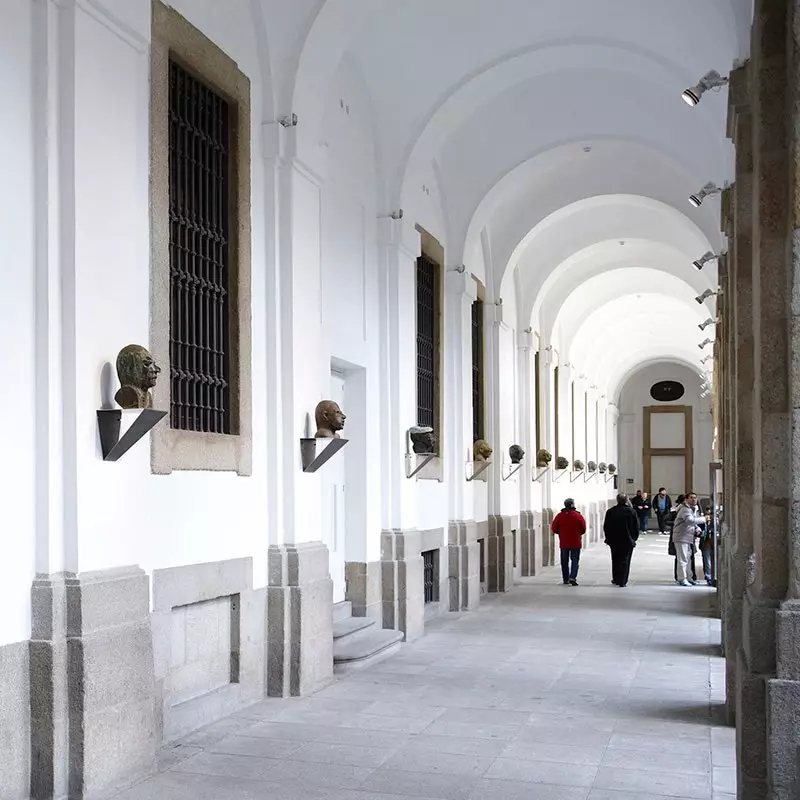
The multipurpose halls of the museum
Four. AN 18TH CENTURY HOSPITAL
And nothing more and nothing less than a mass with almost three centuries behind him. A building that derived its function and concept from a previous hospice built by Philip II . The thing is that when it fell into disuse, back in the 1960s, it was in serious danger of being demolished. Its gigantic proportions were a true dead in the heart of a city that did not know how to use it. Until art appeared.
5. THE FUNNIEST SABATINI BUILDING
But it's not fair to say that it wasn't worth it before. In the successive projects that the Bourbons were building during the 18th century, the names of ' Pritzker ’ neoclassical like Hermosilla or Villanueva . But the architect who participated the most in its conception was Sabatini, responsible for much more ambitious plans. The problem, as always, was financing, causing Sabatini's idea of a hospital complex to be reduced to a third and, incidentally, explaining why its large façade is not much: the Italian architect had designed it for a courtyard inside. Hence it can be the dumbest work of a designer who, at the same time, was building the Puerta del Alcalá. Be that as it may, the large ceilings inside, the wonderful cloister and the restoration and reconversion works make it an ideal space for cultural exhibitions.
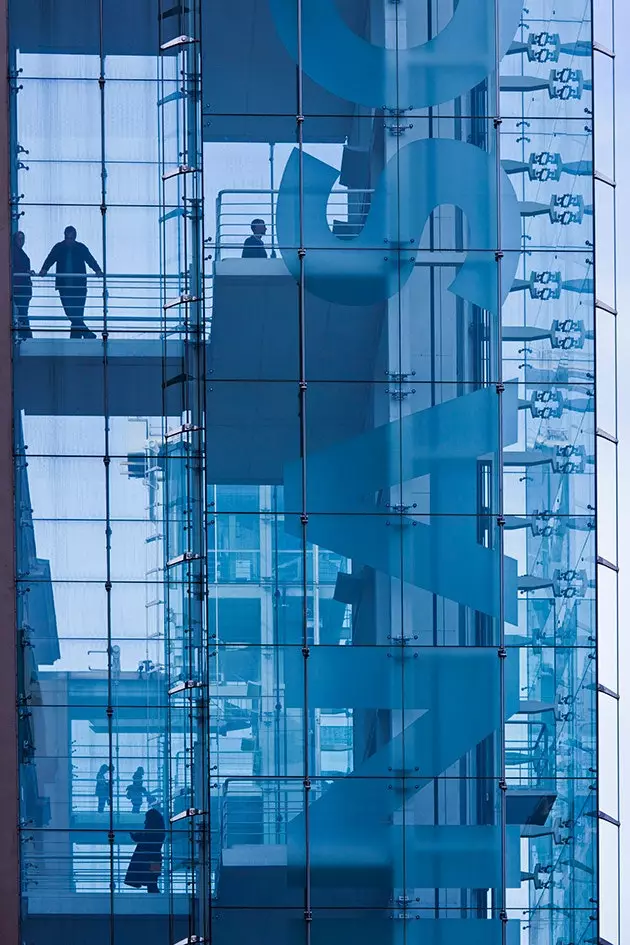
In the Reina Sofía Museum even the elevators are art
6. EVEN ELEVATORS ARE ART
But this facade was wisely made up with glass elevators that caused a furor back in the 90s. They were not intended to be art (what things!), but rather to respect the sober and serene aesthetics of the exterior while they managed to fulfill their function. The applause goes to José Luis Íñiguez de Onzoño and Antonio Vázquez de Castro , parents of these transparent twins.
7. IT ONLY MEASURES 85,000 m2
the queen has the fame of being a somewhat large and soulless museum . However, compared to other monsters like the Louvre (210,000 m2) there is no comparison. And even more so if you take into account that, before the expansion, it barely had 50,000 m2.
8. 5% SHOWN
The Museo Nacional Centro de Arte Reina Sofía, since its inception, has become a benchmark for all contemporary avant-garde movements (discussions on the sidelines). This has caused that in its funds it has some 20,000 works of different techniques and that exhibiting everything becomes impossible. This is something that happens to the great state museums. However, the fact that only 5% is shown is quite remarkable ( compared to 20% of the Prado Museum or 8% of the Louvre ) . Another center that is worth more for what it is silent than for what it tells.
9. ENGRAVINGS WIN
It will be for reasons of space or for the price of the works, the fact is that the engravings win by a landslide with some 5,500 to their credit. Second, there are the Photographs (4,230) followed by paintings (4,100) and drawings (3,600).
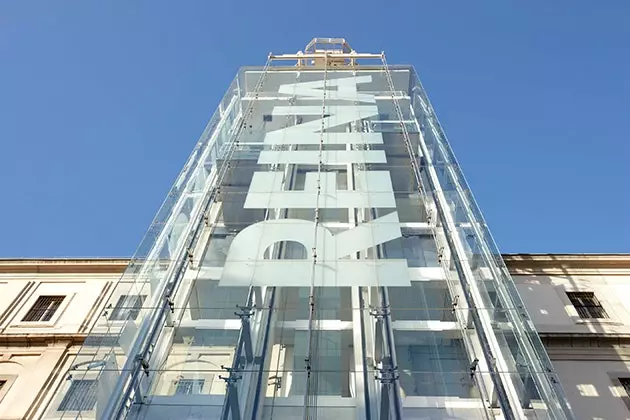
The Reina Sofía National Art Center Museum has some 20,000 works
10. THAT PAVILION OF THE REPUBLIC...
The great attraction of this museum are the works of Dali, Picasso and Miro , with large collections of all three, to which must be added creations by other contemporaries such as Braque, Gray or Tanguy as well as national and international exponents of the latest trends. But deep down, the Reina Sofía seems a bit like a revenge from art, a triumph of the losers. And it is that, in one way or another, that pavilion of the Spanish Republic in the Paris Expo 1937 still very much alive in this place. Here not only rests the Guernica , but also a replica of the great sculpture by Alberto Sánchez Pérez The Spanish town has a road that leads to a star located in the square located at the access doors, a model of mercury source , from Calder; the original sculpture Picasso's lady offerer either Montserrat screaming mask by Julio Gonzalez.
eleven. AND SUDDENLY... JEAN NOUVEL
The 21st century brought with it a necessary expansion (or so they say) whose contest was won by the Frenchman Jean Nouvel. In its controversial adjoining building, the exhibition was expanded, there is a powerful auditorium and, above all, a terrace to discover (with the constant threat of the red roof, a trademark of the house) and a beautiful and silent library. You have to go to both places.
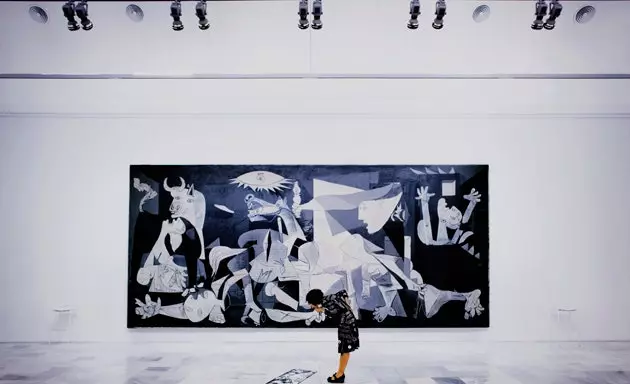
Picasso's Guernica at the Reina Sofía Museum in Madrid
12. ART IN THE RETREAT
But MNCARS is not only in Atocha . The monumental Retiro Park also draws from its funds, using two of its most beautiful spaces to exhibit. The first, the crystal palace, where different art installations are shown on a traveling basis. The second, the Velazquez Palace, an immaculate space inside, free of charge and used for small interesting exhibits. And it may be that without art there are no parks, or at least El Reina insists on proving it.
13. FINALLY WON THE DERBY!
Yes, 2013 was the year of this museum. Thanks to the Dalí exhibition, he managed to take the first place of the most visited museums in Spain from the Prado Museum and, on top of that, surpassing the magic number of 3,000,000 visitors . It's in fashion.
14. PATRON OF SPANISH... AND HISPANIC-AMERICAN ART
Returning to the collection, this voracity to acquire works has not stopped. The Reina continues to be the great patron of contemporary Spanish art, focusing more and more on Hispanic-American artists and gallery owners. As an example, a datum, in ARC 2014 , the museum acquired 17 works valued at €204,625, despite the fact that its budget has been weakening despite the crisis.
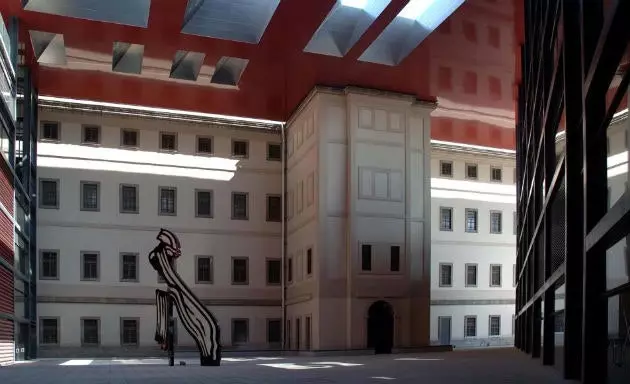
Expansion of the Reina Sofía Museum
fifteen. THE LEGION OF GHOSTS
But in the MNCARS not only paintings live. Also ghosts. The fact of being in an old hospital and being used, in his last strokes , as a kind of Forensic Anatomical has fed the legends from beyond the grave. In fact, the old hospital remained abandoned for many years of the 20th century, in part, due to legends that spoke of a legion of the dead who instigated the rest of the sick to let themselves die to form an army of darkness.
16. THE WANDERING NUNS
With the remodeling works in the 70s and 80s, all these myths became gigantic since numerous human remains were found along with chains and shackles. But the scariest find was made in 1990, just when the famous elevators were being built. Picking around the area of the old hospital chapel, they found the remains of three nuns . Some guards claim to have seen them in procession at night, when the museum rests.
17. ATAULFO OR PICASSO?
All these legends fueled the fear of the museum staff who came to make a Ouija board to either get rid of doubts or be rightly distressed. The result was the appearance of a presence that said to be called Ataulf . The matter reached such a point that the services of a medium were obtained who assured that it was a priest who had died in the Civil war . Other versions (not without a bit of joke) point out that it is the ghost of Picasso, who wanders furious because his anti-war work par excellence lies in a hospital.
18. IT HAS NOT PLANNED TO CHANGE THE NAME
No, the abdication issue is not going to influence your denomination. After all, the queen will always have this role in your LinkedIn.
*** You may also be interested in...**
- The 22 paintings you must see before you die - 10 reasons to visit the National Archaeological Museum - 19 things you didn't know about the Prado Museum - 13 reasons to get lost in a museum in 2014 - Museums of the world in slippers : the best art galleries online - All articles by Javier Zori del Amo
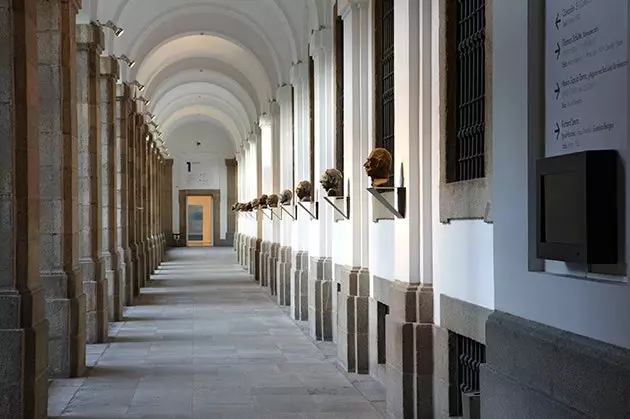
Wish to go back?
